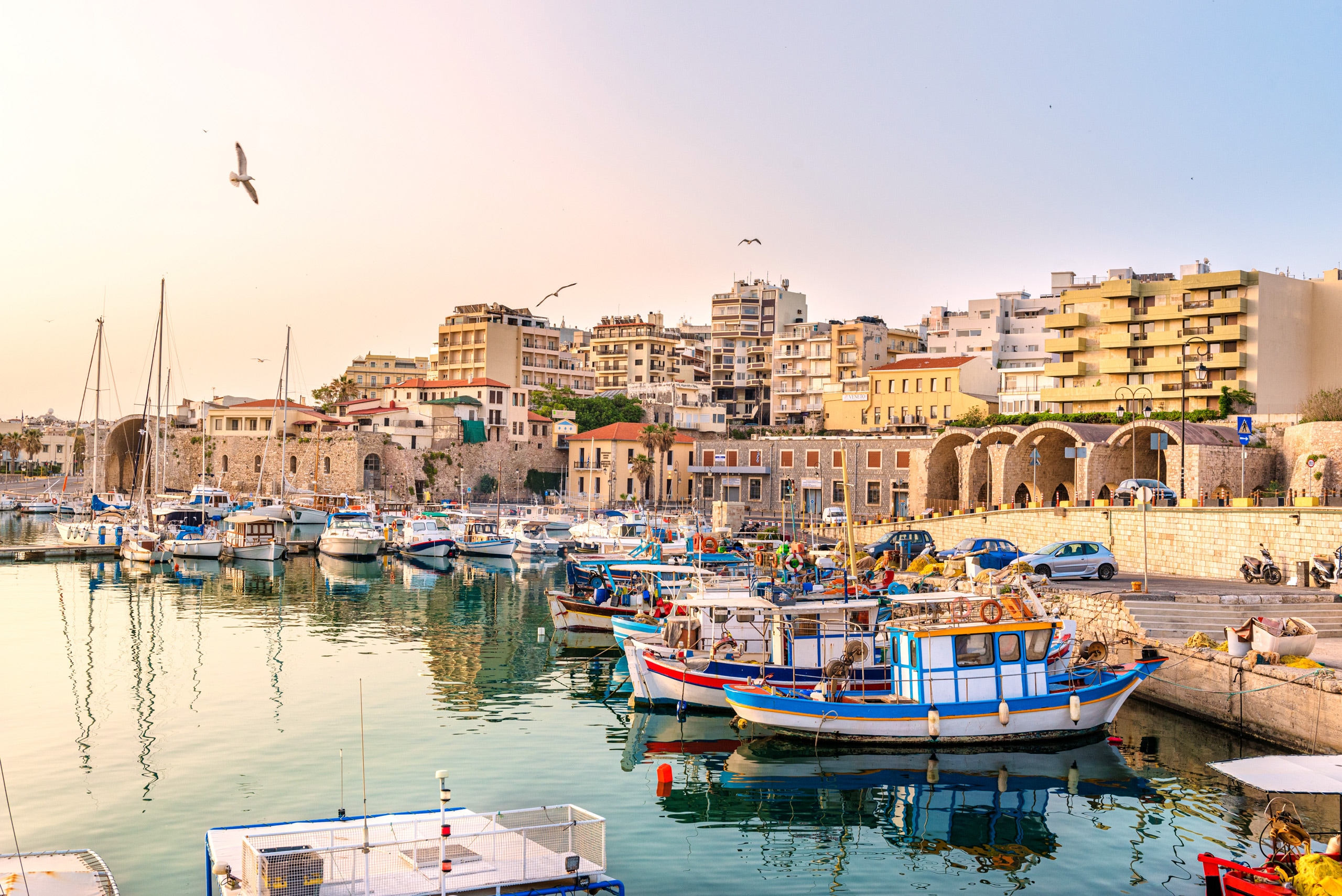
Crete (Heraklion), Greece
Crete (Heraklion), Greece
Description
Archaeological evidence shows that Heraklion probably arose during the 9th century B.C. and was named in tribute to the Greek goddess Rhea, mother of Zeus. And like most Mediterranean cities, Heraklion has a long and turbulent history. Officially founded by the Saracens in the 9th century, the Byzantine Empire invaded in 961 only to lose control to the Crusaders who sold Crete to the Venetians in 1211 for a thousand silver coins.
Heraklion finally flourished under the Venetians. Throughout the city you'll find stunning reminders of their influence: the Loggia, Venetian Walls, and Fountain of Morosini are just a few must-see examples.
But Heraklion is probably best known as the gateway to the breathtaking 4,000 year-old Minoan ruins at Knossos and to the famous windmills stretched across the Lassithi Plateau.
Points of Interest
- Knossos Palace
- Heraklion
- Kera Kardiotissa Monastery
- Spinalonga Island
- Plateau of Lassithi
- Elounda
- Arolithos Cultural Village
- Thrapsano Village
More about Crete (Heraklion), Greece Points of Interest
-
Knossos Palace -
Crete's archaeological gem is the largest and most important of the Minoan palaces. Dating back 7,000 years, Knossos was the mythological home of King Minos who kept the menacing Minotaur in the palace's underground labyrinth. .
-
Heraklion -
Occupied since the Minoan era, the island's capital was officially founded in 824 by the Saracens. The famed Palace of Knossos and the Archeological Museum are just two of the bustling city's many attractions.
-
Kera Kardiotissa Monastery -
Considered Crete's most important Byzantine church, inside you'll find remarkably vivid frescoes from the 14th and 15th centuries. The monastery is equally famous for its Virgin Mary icon, which is believed to have performed miracles.
-
Spinalonga Island -
Lying just offshore from the seaside resort of Elounda, Spinalonga Island was once the home of a mighty 16th century Venetian fortress. The now-deserted island served as a leper colony until 1957.
-
Plateau of Lassithi -
Rising over 2,700 feet, the plateau offers fertile valleys filled with orange groves, vineyards, and picturesque villages. But it's probably best known for the thousands of charming windmills that dot the lush landscape.
-
Elounda -
Once the stopping off point for lepers heading to Spinalonga Island, today, this picturesque seaside resort boasts luxury hotels, quaint tavernas, stunning beaches and breathtaking sea views that stretch across Mirabello Bay.
-
Arolithos Cultural Village -
Arolithos may look centuries old but it's actually a recreated Cretan village. Built in 1988, the town boasts art workshops, two houses, a hotel, a restaurant and a tavern, a café and a small church.
-
Thrapsano Village -
Thrapsano is renowned for its pottery and ceramics. This ancient art form has flourished here dating back over 4,000 years and Thrapsano's craftsmen are said to be descendents of Minoan potters.